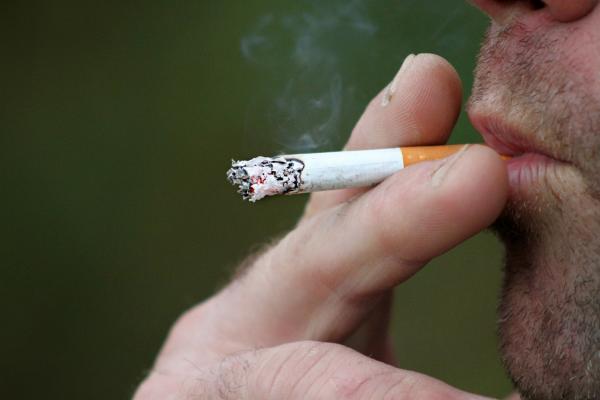An ounce of prevention
The general belief is that prevention is more successful than subsequent treatment. The difficulty smokers have with quitting testifies to the truth of that idea. Public health officials increasingly have focused on preventing the young from beginning to smoke, especially by banning the use of flavors, a “gateway” to nicotine dependence. There is a similar push now on to ban menthol in cigarettes to nudge adult smokers.
In 2018, San Francisco voters approved a ban on all flavored tobacco products, combustibles, and vaping products. A new study in JAMA Pediatrics provides some preliminary outcomes.

The graph is based upon the nationwide Youth Risk Behavior Surveillance System, a biennial survey of high school students and their risky habits. Roughly 10% of the 95,843 participants with data on their smoking behavior came from San Francisco. You can see that through 2017, tobacco use among SF’s teens declines at the same rate as in other locales [1]. But that changed when SF began the ban on flavored tobacco products. The rate of smoking, not vaping, increased, rising to 6.2% versus a 5.6% rate in those other cities. For those who like bigger numbers, the SF ban on flavoring doubled the likelihood that a teen would smoke cigarettes.
Substitution
It seems that when flavor is removed from all tobacco products (including those for vaping) that vaping confers no particular advantage, at least in the malleable minds of teens. In the words of the researchers,
“This raises concerns that reducing access to flavored electronic nicotine delivery systems may motivate youths who would otherwise vape to substitute smoking. Indeed, analyses of how minimum legal sales ages for electronic nicotine delivery systems are associated with youth smoking also suggest such substitution.”
This admittedly early report of outcomes does raise concerns, and it would be helpful to find if this bump-up in smoking use is transient “noise” or will become a steady “signal.”
[1] Broward, Palm Beach and Orange Counties, Florida; Los Angeles and San Diego, California; New York City, and Philadelphia.
Source: A Difference-in-Differences Analysis of Youth Smoking and a Ban on Sales of Flavored Tobacco Products in San Francisco, California JAMA Pediatrics DOI: 10.1001/jamapediatrics.2021.0922




